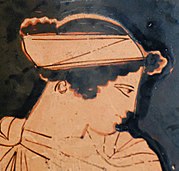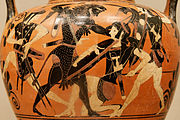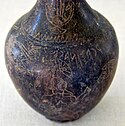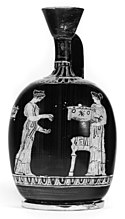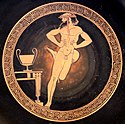Liste der griechischen Töpfer und Vasenmaler/M
Namentlich bekannte Künstler
|
Nicht namentlich bekannte Künstler (Notnamen)
| |||||||||||||||||||||||||||||||||||||||||||||||||||||||||||||||||||||||||||||||||||||||||||||||||||||||||||||||||||||||||||||||||||||||||||||||||||||||||||||||||||||||||||||||||||||||||||||||||||||||||||||||||||||||||||||||||||||||||||||||||||||||||||||||||||||||||||||||||||||||||||||||||||||||||||||||||||||||||||||||||||||||||||||||||||||||||||||||||||||||||||||||||||||||||||||||||||||||||||||||||||||||||||||||||||||||||||||||||||||||||||||||||||||||||||||||||||||||||||||||||||||||||||||||||||||||||||||||||||||||||||||||||||||||||||||||||||||||||||||||||||||||||||||||||||||||||||||||||||||||||||||||||||||||||||||||||||||||||||||||||||||||||||||||||||||||||||||||||||||||||||||||||||||||||||||||||||||||||||||||||||||||||||||||||||||||||||||||||||||||||||||||||||||||||||||||||||||||||||||||||||||||||||||||||||||||||||||||||||||||||||||||||||||||||||||||||||||||||||||||||||||||||||||||||||||||||||||||||||||||||||||||||||||||||||||||||
Künstler-Gruppen
| |||||||||||||||||||||||||||||||||||||||||||||||||||||||||||||||||||||||||||||||||||||||||||||||||||||||||||||||||||||||||||||||||||||||||||||||||||||||||||||||||||||||||||||||||||||||||||||||||||||||||||||||||||||||||||||||||||||||||||||||||||||||||||||||||||||||||||||||||||||||||||||||||||||||||||||||||||||||||||||||||||||||||||||||||||||||||||||||||||||||||||||||||||||||||||||||||||||||||||||||||||||||||||||||||||||||||||||||||
Auf dieser Seite verwendete Medien
Autor/Urheber:
Silenus and maenad, tondo of a red-figure Attic cup, ca. 510 BC–500 BC.
Autor/Urheber: User:Marcus Cyron, Lizenz: CC BY 3.0
Kabierischer Skyphos. Prozession zum Heiligtum der Kabieren. Aus Theben. Vom Mystai-Maler. Spätes 5., frühes 4. Jahrhundert v. Chr. (424)
Helen's head, detail from a scene representing Menelaus' meeting with Helen. Attic red-figured krater, ca. 450 BC–440 BC. From Gnathia (now Egnazia, Italy).
Croesus at the stake. Side A from an Attic red-figure amphora, ca. 500–490 BC. From en:Vulci.
Autor/Urheber: Picture taken by Marcus Cyron, Lizenz: CC BY-SA 3.0
Antikensammlung Kykladenmuseum.
Autor/Urheber: Attributed to the Medea Group, Lizenz: CC BY 2.5
Herakles fighting the Amazons, side A from an Attic black-figure neck amphora.
Autor/Urheber: , Lizenz: CC BY-SA 4.0
Dieses Bild zeigt ein Denkmal, das zum Kulturerbe Italiens gehört. Dieses Denkmal nimmt am Wettbewerb Wiki Loves Monuments Italia 2016 teil.
Autor/Urheber:
Dispute of Herakles and Apollo for the Delphic tripod. Side A from an Attic hydria.
Spacer image
Autor/Urheber: Picture taken by Marcus Cyron, Lizenz: CC BY-SA 3.0
Attisch-schwarzfigurige Halsamphora das Malers von München 1519; (A-Seite: Paris Urteil - Hermes führt Hera, Athena und Aphrodite zu Paris,) B-Seite: Flucht aus Troja nach dem Fall - Aineas flieht mit Anchisis, Iulos und einem weiteren Gefährten unter dem Schutz der Aphrodite; in Etrurien gefunden; um 510 v. Chr.; Museum August Kestner Hannover; Inventarnummer 754; ehemalige Sammlung A. Kestner
Autor/Urheber: Picture taken by Marcus Cyron, Lizenz: CC BY-SA 3.0
Sehr feine etruskische Impasto-Kanne mit Ritzzeichen (auf der Töpferscheibe geschaffen -> buccheroider Impasto), die phönizische Vorbilder aus Metall immitiert, Henkel fehlen; am Hals phönische Palmette, Bauchbild zeigt Krieger zwischen einem Pferd und einer säugenden Ziege, darüber zwei von rechts nach links laufende Vögel sowie die Inschrift Mi MAMARCE ZINACE, wohl eine Herstellersignatur eines Töpfers Mamarce; produziert in Volterra; Vorderseite: Männerkopf, Rückseite: etruskische Säule; um 640/20 v. Chr.; heute in der Antikensammlung Würzburg, Inventarnummer H 5724.
Autor/Urheber: Autor/-in unbekannt; Picture taken by Marcus Cyron, Lizenz: CC BY-SA 3.0
Frühattische Hydria des Mesogaia-Malers; plastische Schlangen an Gefäßlippe, Hals und Henkel was auf eine Verwendung im Grabkult hinweist; Halsbild zeigt Frauenreigen mit einem Jüngling, Gefäßbauch einen Mann hinter zwei Sphingen; um 700 v. Chr., aus Athen, Antikensammlung im Alten Museum Berlin
Autor/Urheber: Picture taken by Marcus Cyron, Lizenz: CC BY-SA 3.0
Da ich derzeit nicht dazu komme, all meinen Bildbestand angemessen aufzubereiten, andererseits aber das material nicht sinnlos auf dem PC verkommen lassen will, habe ich mich entschlossen es mitsamt eventueller Begleittexte (die dann gelöscht werden sollten) quasi als Rohmaterial hochzuladen. Jeder ist herzlich eingeladen, Beschreibungen hinzuzufügen, Titel zu verbessern, Kategorisieren etc.
Autor/Urheber: Marlay Painter, Lizenz: CC BY 2.5
Marriage procession: the bride is driven in a chariot from her parent's home to that of her husband. Detail from an Attic red-figure pyxis, 440-430 BC.
Autor/Urheber: unknown, Lizenz: CC BY-SA 4.0
Loutrophoros apula a figure rosse, Gruppo della Metopa
Autor/Urheber: Autor/-in unbekannt, Lizenz: CC BY-SA 3.0
Sogenannte "Melische Prunkamphora" (Pithos-Amphora); A-Seite: Herakles (daher "Herakles-Amphore) und Deianeira, die in einem Streitwagen stehen und von geflügelten Pferden gezogen werden, daneben Deianeiras Eltern Oineus und Althaia, am Hals Hermes, Artemis sowie 2 Pferde, unter den Henkeln: apotropaische Augen; spätes 7./frühes 6. Jahrhundert v. Chr. in einer parischen Werkstatt gefertigt; gefunden in Aptera auf Kreta; heute im Archäologischen Nationalmuseum Athen (Inventarnummer 354).
Autor/Urheber: Painter of the Madrid Fountain (name piece), Lizenz: CC BY 2.5
Women fetching water from a fountain house; a boy bathing naked under the water stream. Side A from an Attic black-figure hydria, ca. 520 BC. Probably it's a reduced representation of the Enneakrounos ("Nine-Jets Fountain House"), built by Peisistratos in Athens.
Autor/Urheber: Meleager Painter, Lizenz: CC BY-SA 2.5
Calydonian Boar Hunt: Atalanta sits holding a spear, surrounded by Meleager, possibly Tydeus, and other heroes. Attic red-figure amphora, 400-375 BC. Unknown provenance.
Autor/Urheber: Maler der Münchner Atalante (Namenvase), Lizenz: CC BY 2.5
Ringkampf von Peleus und Atalante. A-Seite einer attischen schwarzfigurigen Halsamphora, 500-490 v. Chr.
Autor/Urheber: Dave & Margie Hill / Kleerup, Lizenz: CC BY-SA 2.0
Prize Vessel from the Panathenaic Games (Greek, Athens, 340-339 BC.) - detail. In the Apobates race, the warrior would jump off, run alongside the chariot, then jump back on.
© Marie-Lan Nguyen / Wikimedia Commons, CC BY 2.5
Horses harnessed to a quadriga (now lost). Corinthian black-figure plaque, ca. 575-550 BC. From Penteskouphia. [a second part of this pinax today is in the Antikensammlung Berlin]
This squat lekythos depicts Eutychia, Eunomia, and Paidia. On the left Eutychia stands frontally, looking right. She holds a chest on her left forearm at waist level; her right hand hangs down by her side holding a necklace. She wears a girded peplos, diadem, necklace, earring, and bracelets. Next is Eunomia who walks solemnly to the right, holding a necklace between her outstretched hands. She wears a girded peplos, necklace, bracelets, earring, diadem and a decorated band which holds her hair in place. On the right Paidia stands turned partially to the left, holding a chest. She wears a girded peplos, necklace, earring, and bracelets; her hair is tied in back. A diphros with a thick, patterned cushion stands beside her. The personifications on this vase, from left to right are to be understood as Good Luck, Good Order, and Games and Play. They are depicted as normal Athenian women and do nothing which might associate their actions with the literal meanings of their names.
Amazonen als Verbündete Trojas. B-Seite einer schwartzfigurigen attischen Amphora, um 510 v. Chr. Aus Vulci.
Two women bringing offerings to a tomb. Apulian red-figured hydria, ca. 360–350 BC. From Cyrenaica.
© Marie-Lan Nguyen / Wikimedia Commons, CC BY 2.5
Apulian red-figure epichysis with palmette decoration.
Autor/Urheber: , Lizenz: CC0
Autor/Urheber: Wmpearl, Lizenz: CC0
Skyphos (drinking vessel) by the Miami Painter, Greece, c. 600-575 BCE, pottery and paint, Lowe Art Museum
Autor/Urheber: Marcus Cyron, Lizenz: CC BY-SA 3.0
Da ich derzeit nicht dazu komme, all meinen Bildbestand angemessen aufzubereiten, andererseits aber das material nicht sinnlos auf dem PC verkommen lassen will, habe ich mich entschlossen es mitsamt eventueller Begleittexte (die dann gelöscht werden sollten) quasi als Rohmaterial hochzuladen. Jeder ist herzlich eingeladen, Beschreibungen hinzuzufügen, Titel zu verbessern, Kategorisieren etc.
Dionysos, silenus and maenad. Side B from an Attic red-figure calyx-krater, 520–510 BC.
Drei Amazonen. Attisch rotfigurige Oinochoe des Mannheimer Malers, 460-450 v. Chr. Aus einem Grab in Orvieto. Reiss-Engelhorn-Museen, Mannheim, Inv. 61. Beazley, ARV2, 1066, 9.
Autor/Urheber: Picture taken by Marcus Cyron, Lizenz: CC BY-SA 3.0
Da ich derzeit nicht dazu komme, all meinen Bildbestand angemessen aufzubereiten, andererseits aber das material nicht sinnlos auf dem PC verkommen lassen will, habe ich mich entschlossen es mitsamt eventueller Begleittexte (die dann gelöscht werden sollten) quasi als Rohmaterial hochzuladen. Jeder ist herzlich eingeladen, Beschreibungen hinzuzufügen, Titel zu verbessern, Kategorisieren etc.
Autor/Urheber: , Lizenz: CC BY 3.0
Museo Archeologico (Colle di Val d'Elsa)
Dionysos und Ariadne (?). Auf dem Boden gelagert, der Gott mit seinem typischen Kantharos; dabei ein Teller mit Broten. Schwarzfigurige attische Halsamphore, um 520 v. Chr. Aus Vulci.
Blonde schlangenleibige Rebnymphen feiern den kommenden Wein. A-Seite einer attischen schwarzfigurigen Trinkschale, um 510 v. Chr.
Autor/Urheber: Picture taken by Marcus Cyron, Lizenz: CC BY-SA 3.0
Etruskischer Kantharos mit Reliefappliken und Resten von Bemalung und Vergolgung: Tänzerin und Jünglinge; spätes 4. Jahrhundert v. Chr., Malaceana-Werkstatt
This red-figure column-krater depicts a komos.
On the front are three males and a woman. On the left, a bearded, mantled man moves left, looking at a skyphos (less handles) which he holds up in his right hand; a staff is in the left. He wears a thick fillet in reserve around his head. Part of the front of the figure and skyphos extend into and beyond the left border of the picture field. The front of his right foot has been covered with glaze. Behind him a youth with barbiton moves right. He has a mantle draped over his left shoulder and a similar band around his head. In his right hand he holds up a plectron. In front of him a bearded, mantled man moves right, looking around. He has a staff in his right hand and a band around his head. On the far right is a woman wearing a chiton, mantle, necklace, and fillet moving right and looking around. She holds a pair of auloi in her left hand. Her left foot overlaps the right border of the picture field. The short cropped hair gives her an androgynous appearance, suggesting that the painter might have been confused as to the sex of the figure.
On the back are three maenads. On the left a woman in a chiton and mantle who holds a thyrsos in her right hand stands in profile to the right. In the center another woman in a chiton and mantle stands to the left, extending her right arm. On the right a third woman in chiton and mantle moves left, looking around. A bag hangs between the last two figures.
On the rim are silhouettes of confronted lions and boars.Autor/Urheber: Sailko, Lizenz: CC BY 3.0
Anfora attica di tipo panatenaico, opera del Pittore di Michigan. Lato A: Athena Promachos tra colonne doriche. Lato B: Penthatleti: un discobol e un lanciatore di giavellotto con un allenatore. Datazione 510-500 a.C. Da Vulci, scavi del 1837. Musei Vaticani, Museo Gregoriano Etrusco, Sala XIX Emiciclo inferiore, vetrina B, inv. 17048.
Autor/Urheber: Picture: Marcus Cyron, Lizenz: CC BY-SA 3.0
Da ich derzeit nicht dazu komme, all meinen Bildbestand angemessen aufzubereiten, andererseits aber das material nicht sinnlos auf dem PC verkommen lassen will, habe ich mich entschlossen es mitsamt eventueller Begleittexte (die dann gelöscht werden sollten) quasi als Rohmaterial hochzuladen. Jeder ist herzlich eingeladen, Beschreibungen hinzuzufügen, Titel zu verbessern, Kategorisieren etc.
Autor/Urheber: , Lizenz: CC BY-SA 4.0
Dieses Bild zeigt ein Denkmal, das zum Kulturerbe Italiens gehört. Dieses Denkmal nimmt am Wettbewerb Wiki Loves Monuments Italia 2016 teil.
Autor/Urheber: , Lizenz: CC0
Autor/Urheber: Meidias Painter (eponym vase, according to signature), Lizenz: CC BY-SA 4.0
Rape of the Leucippids by the Dioscuri; bottom left, Kastor and Eriphyle; charioteer is Chrysippos. Attic red-figured hydria, ca. 420–400 BC.
Silenus. Tondo of an Attic red-figured cup, ca. 480–470 BC.
Autor/Urheber: Picture taken by Marcus Cyron, Lizenz: CC BY-SA 3.0
Antikensammlung Kykladenmuseum.





















